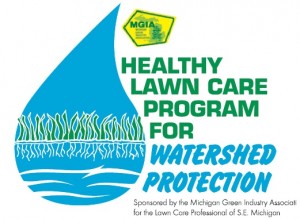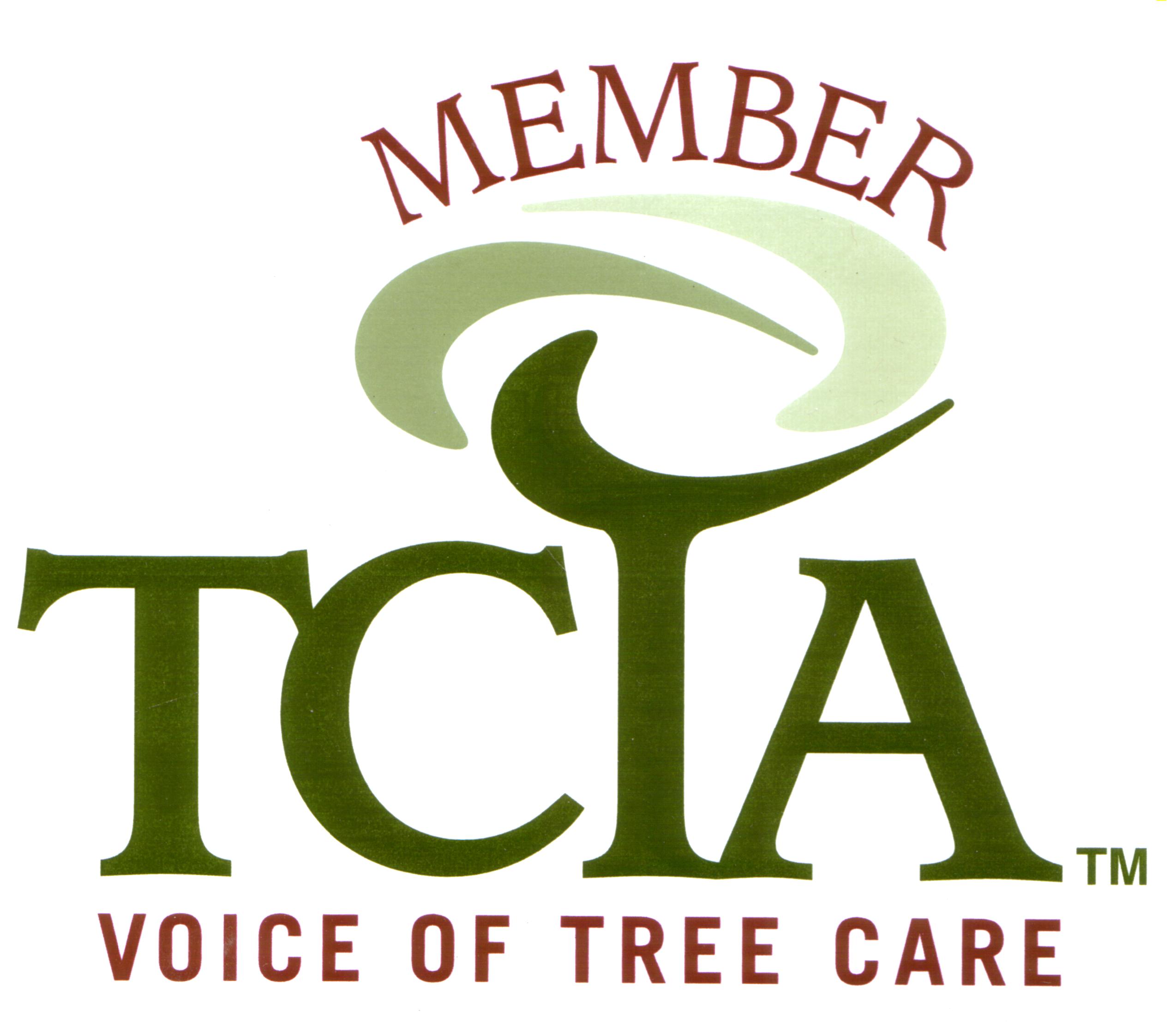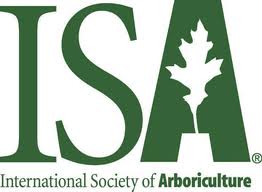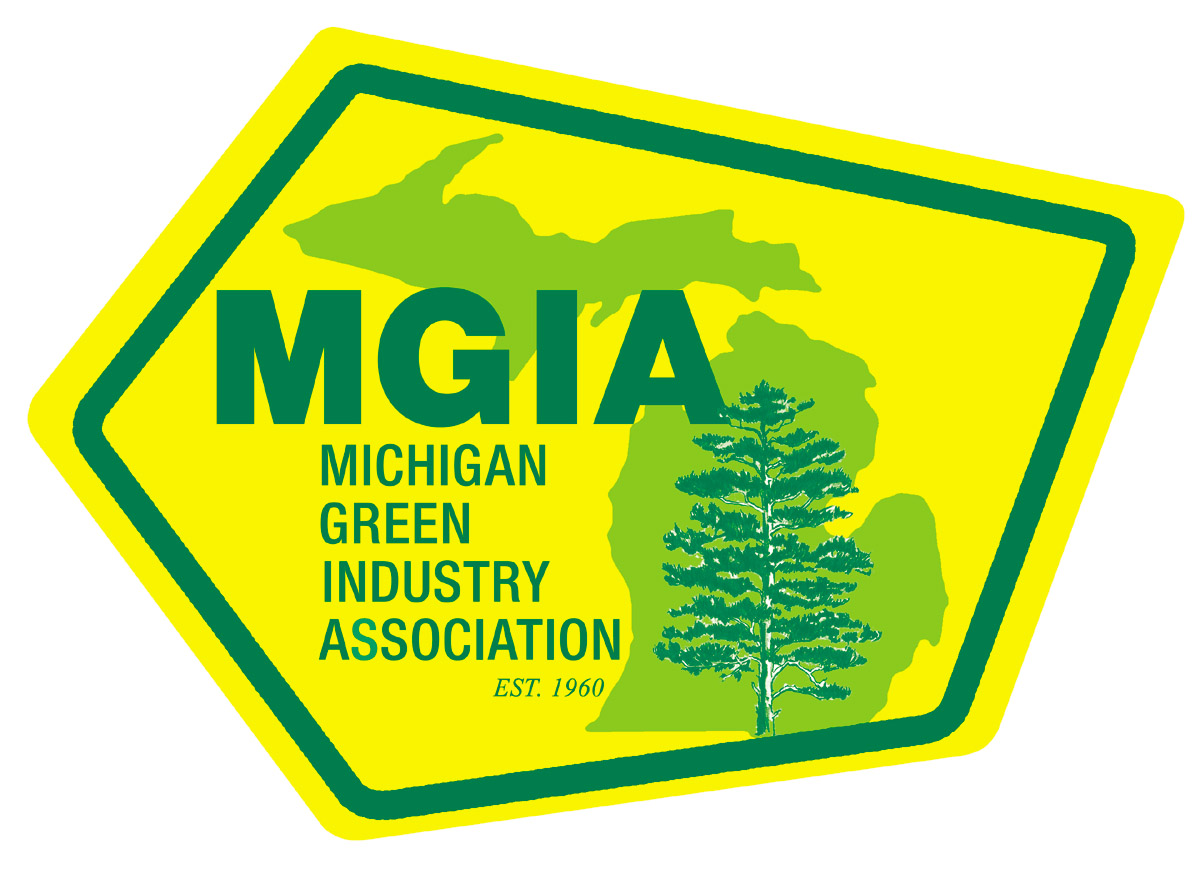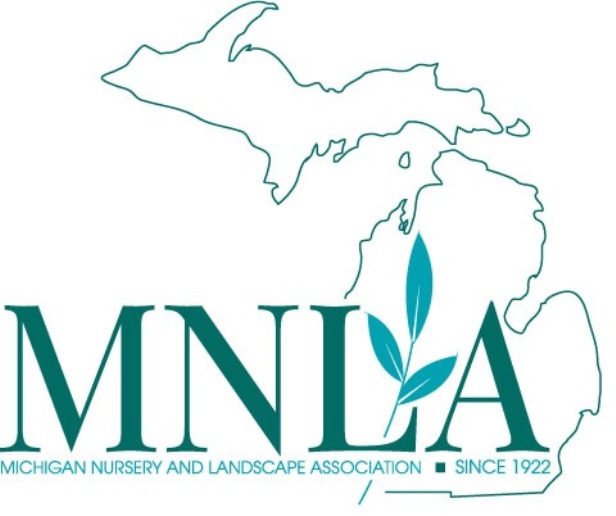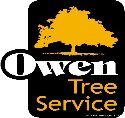CONTACT OWEN TREE AT:
WINTER INJURY ON LANDSCAPE PLANTS
What is winter injury on plants? Actually, there are several different types of winter injury and the cause of the winter injury could be from the weather, animals, or human activities.
You might see winter injury on your plants anytime from when the injury actually occurs (snow or ice damage) to several weeks after the plants flower or leaf out (as is the case with low temperature injury). The damage could be as minor as marginal scorching on leaves all the way to the complete death of the plant.
Winter Desiccation
Desiccation or “winter burn” occurs when the winter sun and winds dry out exposed conifer needles or broadleaf evergreen plants. Evergreen plants transpire water during the winter, but if the soil is frozen the plants cannot replace the water that has been lost. Excessive drying occurs mostly on the edges of the foliage, and where there is direct exposure to the sun. Plants on the south side of buildings with direct sun exposure or plants exposed to high winds are most susceptible. Dried up, dead areas on rhododendron leaves or brown needles on Alberta Spruce are common symptoms of winter burn in Michigan.
You can help reduce winter burn on your plants by:
Watering in late fall, just before you put your garden hose away for the season
Mulching around plants to help moderate soil temperatures
Wrapping plants or putting up a burlap barrier to buffet the effects of the wind
Apply an anti-transpirant spray in late fall and again in mid-winter, when possible
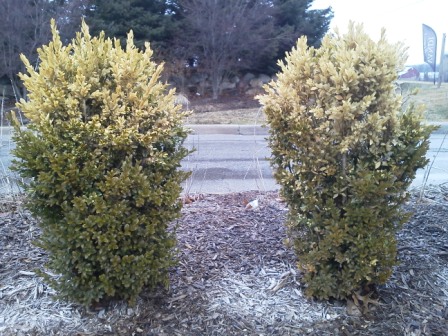
Winter burn on Boxwood shrubs. The foliage under the snow cover was protected from the winter winds.
Low Temperature Injury
This type of winter injury damages or destroys the vascular (water conducting) system in a plant. Trees and shrubs may show shoot die back or death of flower or leaf buds from extremely cold temperatures. Flower buds are most susceptible to injury, but damage can also be done to leaf buds, plant stems, and even plant roots. Low temperature injury can affect the whole plant or just some of the stems or branches of the plant. A common symptom of low temperature injury is when a plant leafs out normally, but the foliage suddenly turns brown as soon as the plant is under any type of moisture stress.
Even with the best of care, low temperature injury can be difficult to prevent. Native trees and shrubs are more likely to survive extremely low temperatures than are non-native plants. Damaged stems and branches should be pruned from the plant if the winter injury is too severe.
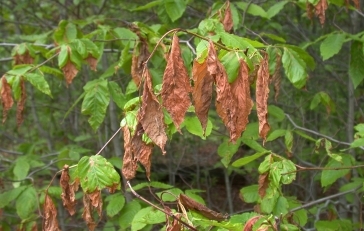
Low temperature injury caused these leaves to turn brown as soon as the weather started to get warm.
Snow & Ice Damage
Wet, heavy snow can cause weak tree branches to break and can damage the form of evergreen shrubs like arborvitae plants. Ice storms can cause serious winter injury to perfectly healthy trees and shrubs.
Keeping plants pruned on a regular basis will reduce the amount of ice or snow they can collect in a storm and will eliminate weak branches from the plant. Lightly shake or brush off excess snow from bent over trees or shrubs, but don’t try to shake ice loose from ice-coated branches.
Frost Injury
Frost injury to landscape plants usually occurs in the late spring, but can also happen in the early autumn. Young plant tissue, or tissue that has yet to “harden-off’, to withstand cold temperatures is susceptible to this type of injury. The flowers of early flowering trees such as magnolia are often turned brown in the spring by frost injury.
Some plants, like roses, can be covered in the early evening if a frost warning is issued. Plant tissue that is damaged from frost should be pruned back to viable growth. Frost injury rarely causes any long-term negative effects on landscape plants.
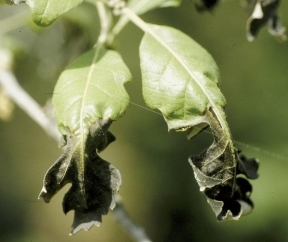
Frost injury on oak. Photo: Joseph O'Brien, USDA Forest Service, Bugwood.org
Sunscald
This injury occurs when the cambium tissue is killed by abrupt temperature fluctuations from the sun warming the bark during the day followed by rapid cooling after sunset. Sunscald is usually seen on the south or southwest side of the tree and is most common on young or thin-barked trees.
Maple trees and linden trees are commonly damaged by sunscald. Wood decay fungi will often start to grow on the part of the tree damaged by sunscald. Trees damaged by sunscald can easily be blown over by high winds in the summer.
You can reduce the potential for sunscald by wrapping the tree trunks with tree wrap or burlap over the winter months. The tree wrapping should be removed in the spring so it does not provide a harboring location for insects or keep the tree bark excessively wet.
Fertilizing trees damaged by sunscald can help speed up the growth of callus tissue over the damaged parts of the tree.
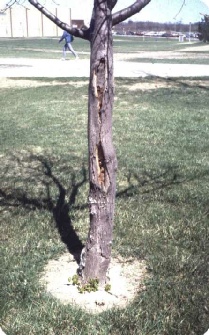
Linden tree damaged by sunscald. Decay fungi is starting to grow on the lower tree trunk.
Frost Cracks
The same weather conditions that cause sunscald can also cause frost cracks in trees – sunny days followed by rapidly cooling temperatures after sunset. In this situation the bark cools and contracts quicker than the core of the tree. The temperature differential between the interior and exterior of the tree causes a long vertical split to occur in the trunk. When a frost crack happens the first time on a tree it makes a loud snapping sound, almost like a rifle shot. The exposed wood of the trunk provides an entry point for wood decay fungi.
Wrapping tree trunks in the fall can reduce the possibility of frost cracks. Although frost cracks can heal over, the crack can easily open again under the right weather conditions. Installing bracing rods when the crack is closed in the summer can prevent frost cracks from reopening.
Fertilizing the tree will help promote the growth of callus tissue over the damaged part of the tree.
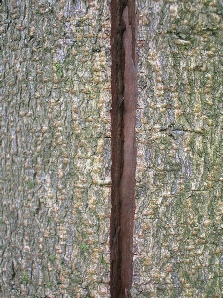
Frost crack on the trunk of a horsechestnut tree.
Salt Damage to Plants
Deicing salts can harm plants in a couple ways – salt spray or build up of salt in the soil. Salt spray can increase needle browning on evergreen plants and can cause “witches’-brooms” to form on deciduous plants. A build up of sodium or chloride based salts in the soil can harm plants by drawing water from plant roots or by the salts being absorbed by the roots.
Minimize salt damage to your plants by:
Using alternatives to salt such as sand or ash
Use an alternative salt such as calcium chloride, which is less harmful to plants


Use a physical barrier, like burlap or a snow fence, to block salt spray
Maintain plant health with proper watering, mulching and fertilizing
Where a large build up of salt has occurred in the soil you can help remediate the situation by adding organic matter to the soil, mixing in activated charcoal, or applying and watering in gypsum. Heavy spring rains will leach most of the damaging levels of deicing salts through the soil profile.
Animal Damage to Trees & Shrubs
Voles, mice, rabbits and deer commonly cause damage to plants in the winter. These animals feed on the smaller twigs, evergreen foliage and bark of both trees and shrubs. With heavy snow cover rodents freely access and eat the bark off of small tree trunks and shrub stems. If enough bark is removed the entire stem, or tree, may die.
Protect the trunks of young trees by wrapping them with chicken wire or hardware cloth. Keep in mind that snow will increase the height that rabbits will be able to reach on a tree trunk. Also, wrap all the way to the ground to prevent damage from voles and field mice. Fencing can be placed around shrubs to prevent damage from rabbits or deer. Extend the fencing well beyond the spread of the plant to prevent animals from leaning over the fence to feed. Various spray emulsions are available to prevent rabbits or deer from feeding on plants. Spray treatments for rabbits or deer usually have a 3-5 week residual, so repeated treatments (if weather permits) will be necessary.
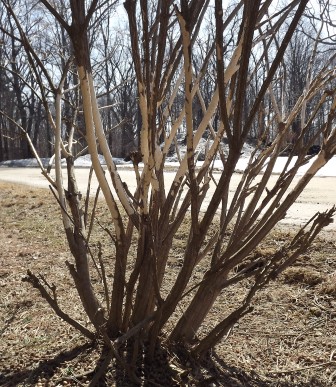
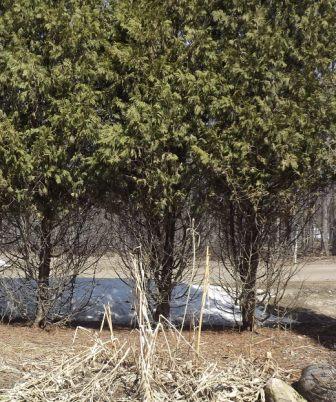
Rabbit feeding damage on burning bush shrub.
Deer feeding damage on arborvitae plants.

● Leonard
Owen Tree Service provides tree, lawn, and landscape services to the following cities and towns:
Genesee County, Michigan:
● Burton
● Davison
● Flushing
● Goodrich
● Linden
● Otisville
● Clio
● Fenton
● Gaines
● Grand Blanc
● Montrose
● Otter Lake
● Flint
● Genesee
● Lennon
● Mt Morris
● Swartz Creek
Lapeer County, Michigan:
● Almont
● Brown City
● Columbiaville
● Imlay City
● Metamora
● Peck
● Attica
● Clifford
● Dryden
● Lapeer
● North Branch
● Sandusky
● Hadley
● Mayville
● Otter Lake
● Silverwood
Macomb County, Michigan:
● Armada
● Clinton Twp
● Grosse Pointe
● Macomb
● New Haven
● St Clair Shores
● Centerline
● Detroit
● Grosse Pointe Farms
● Ray
● Sterling Heights
● Chesterfield
● Eastpointe
● Grosse Pointe Shores
● Memphis
● Romeo
● Utica
● Clinton
● Fraser
● Grosse Pointe Woods
● Mt Clemens
● Roseville
● Warren
● Harrison Twp
● New Baltimore
● Shelby Twp
● Washington
Oakland County, Michigan:
● Auburn Hills
● Bloomfield Village
● Ferndale
● Orion
● South Lyon
● Berkley
● Clarkston
● Franklin
● Madison Heights
● Ortonville
● Southfield
● Beverly Hills
● Clawson
● Hazel Park
● Milford
● Oxford
● Troy
● Bingham Farms
● Commerce Twp
● Highland
● Novi
● Pleasant Ridge
● Walled Lake
● Birmingham
● Davisburg
● Holly
● Oak Park
● Pontiac
● Waterford
● Bloomfield
● Detroit
● Huntington Woods
● Oakland
● Rochester
● West Bloomfield
● Bloomfield Hills
● Farmington
● Lake Orion
● Oakland Twp
● Rochester Hills
● White Lake
● Farmington Hills
● Lathrup Village
● Orchard Lake
● Royal Oak
● Wixom
St. Clair County, Michigan:
● Algonac
● Casco
● East China
● Harbor Beach
● Lexington
● Peck
● Allenton
● Clay
● Emmett
● Harsens Island
● Marine City
● Port Huron
● Berlin
● Clyde
● Fair Haven
● Jeddo
● Marysville
● Richmond
● Brockway
● Columbus
● Fort Gratiot
● Kimball
● Memphis
● Sandusky
● Capac
● Cottrellville
● Goodells
● Lakeport
● North Street
● St Clair
